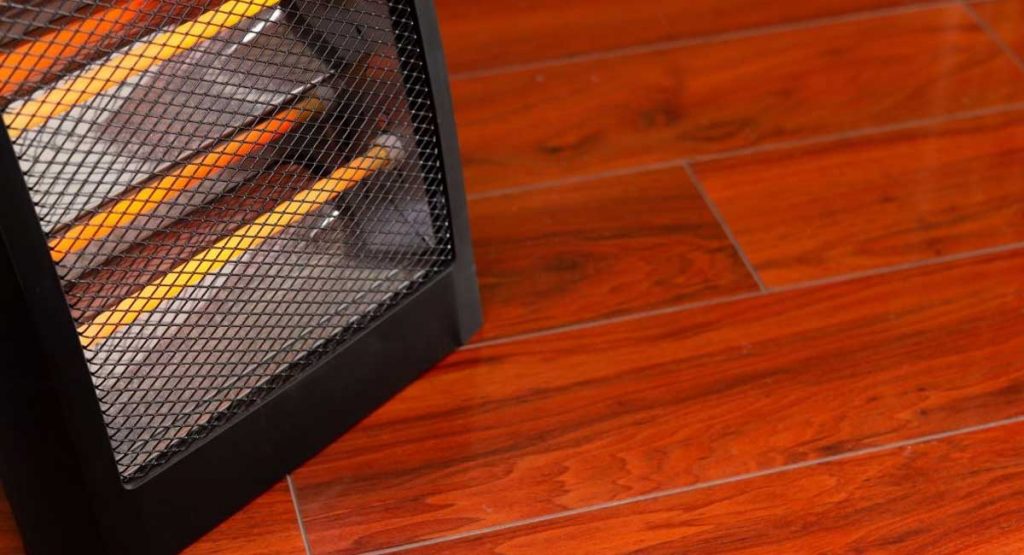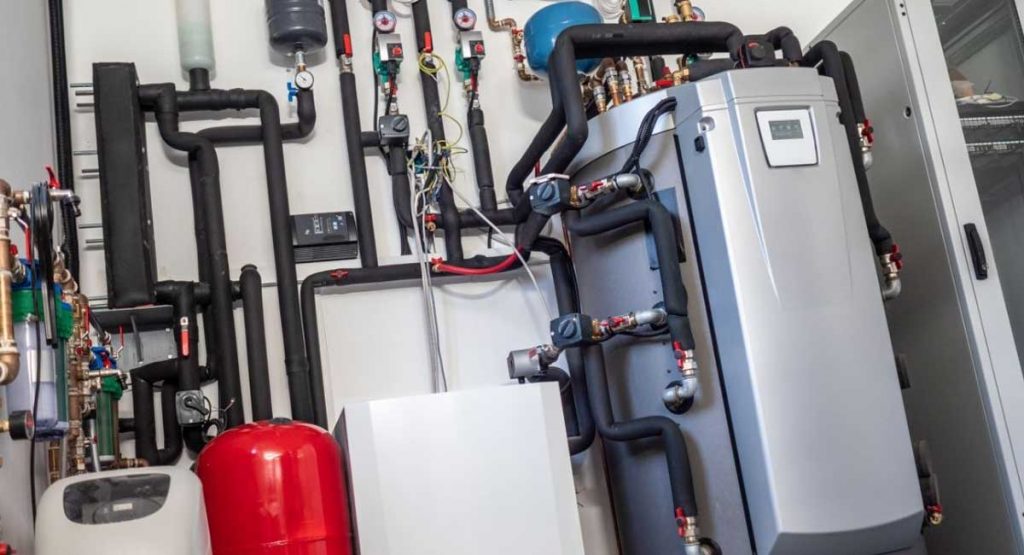The very first heating system known to man is (you guessed it) fire! Fire is an energy source that is used for cooking, staying warm, and manufacturing and even though fire is so flexible and functional, even it has its limitations.
As mankind evolved, their desire to be more comfortable and at ease evolved as well. This desire to be comfortable and safe has resulted in many different types of heating systems that we all love to use when it gets chilly outside.
Today, there are many different heating systems out there and in this guide, we are going to take a peek at the most popular types of heating systems to get for home use.
Types of Heating Systems
There are so many different types of heating systems and home warming solutions out there and new concepts are invented every couple of years.
The many different types of heaters and warmers out there fall into three main categories; central heat systems, direct heat systems, and state-of-the-art heating systems.
Let’s take a closer look at the main differences between these warming systems and discuss the different devices or setups that you can get under each of these categories.
Central Heat Systems
A central heating system is a system that is fueled by a single device but provides warmth to several rooms inside the building. In most cases, these units can also produce hot water in the main heat source. These types of systems can only produce heat and are unsuitable for creating cool interiors in the summertime.

Here is a quick look at the main types of central heat systems found in homes.
Furnaces
A furnace functions by blowing warm air into ducts that connect to rooms throughout the house. Furnace systems are also referred to as ducted warm-air systems or forced warm-air systems.
Furnaces can have all sorts of designs and there are quite a few types including the electric furnace, gas furnace, or fuel oil furnace. This creates a flame that burns these fuels and warms up a metal heat exchanger. When the furnace fan blows air over the heat exchanger, the air becomes warm and this hot air is then blown into the ducts to warm up interior spaces.
Older furnace models weren’t very eco-friendly but modern devices have a much more sustainable design and they include a thermostat that can shut off or turn on hot air to certain rooms and control the temperature.
Boilers
Boilers are designed to warm up water in order to distribute heat through rooms. Boiler systems usually consist of various elements like the boiler in which the water is warmed up, tubes through which steam or hot water can circulate, and a radiator that distributes heat into specific rooms.
Boilers can be electricity, gas, coal or solar energy fueled.
The boiler heats the water and a pressure pump forces the high-pressure warm water to be pushed into the tube system, through the house, and will run through several radiators that transfer heat from the water out into the room. The water gradually cools down and is then pushed back into the boiler where it heats up again.
Steam boiler systems function on the same principle as hot water boiler systems but are not as common these days since they can be challenging to man.
Compared to other systems, boiler heat systems can be expensive to install, but they can be extremely energy-efficient and eco-friendly.
Heat Pumps
There are two main types of heat pumps:
Air-source heat pumps
Air-source heat pumps are the more common type of the two because they are easier and more affordable to install. This two-way air conditioner functions by moving heat from the cool indoors to the warm outdoors. In winter, the system reverses, and heat from outside is used to warm up the cooler indoors.
Air-source heat pumps use electricity to discharge the hot or cool air inside your home but they are extremely energy efficient since the electricity is simply used to move heat instead of generating it. This enables these devices to deliver more warm air energy than it consumes.
Ground-source heat pumps
Ground-source heat pumps are also referred to as geothermal pumps or GeoExchange pumps. The type of heat pump has the same basic functionality but the pumps generate their heat from underground since the temperatures are more constant throughout the year.
These systems are quite expensive to install since a pipeline needs to be fitted underground at a relatively deep depth.
Direct Heat Systems
As the name indicates, the heat generated from these systems is directly applied in the room or product in which the energy is converted into heat. There are lots of direct heat systems all around us including many that date back to ancient times. Here is a quick look at the most common direct heat systems you might have seen in action or used many times in your life.
Gas-fired Space Heaters
Gas-fired space heaters usually consist of a gas or propane container, and fire or a flame. The gas fuels the flame that warms up a vented metal component inside the heater and warmth is produced. Models that do have fanning systems are then used to direct the heat in a specific direction.
These systems are very popular in small households because they don’t require any ductwork. They are ideal for warming individual rooms and can be a terrific portable solution. If you want to use a single gas space heater to warm up different rooms, you will have to open the doors to these rooms and allow the air to circulate.
A lot of people love gas-fired space heaters because they are extremely effective for warming specific areas, they can be moved around with ease, gas is affordable compared to electricity, and they help create a charming ambient atmosphere.
But these systems can be dangerous if they are not used properly or if you use them in an unvented area.
Electric Space Heaters
These portable plug-in heaters are affordable to buy but they can be expensive to use. Electric space heaters convert the electric current into heat and many have built-in fans that help distribute the warmth through the room.

These space heaters are very easy to operate. You can just plug it into your wall socket and turn it on to produce radiant heating. Hot air will start filling the room within seconds. But prolonged use for this popular type of electric heater isn’t recommended because they require a lot of electricity to generate hardly eco-friendly heat.
There are also some larger electric heating devices available that can be installed on the room wall. These units usually have a thermostat that you can set to regulate your home temperature and the thermostat can turn off the heater once the room reaches the desired temperature to save energy.
Wood and Pellet-Burning Stoves
US President Benjamin Franklin invented the wood-burning stove in 1740 to warm dwellings while reducing wood consumption.
These heating systems are still loved in rural areas where you have access to a lot of dry wood or where you might not have access to electricity. They are also often used because wood tends to be more affordable to come by compared to gas or electricity.
Wood and pellet stoves are usually multi-functional because they won’t just warm up your interior spaces, they can also be used for cooking or for producing warm water.
With proper installation, these types of warming solutions can be very effective. Tall chimneys are designed to draw in cool air from outside to fuel the fire and carry out the smoke while all the warmth is let out inside the room itself.
But lots of people are concerned about the amount of air pollution wood stoves produce. These cooking vessels can also be smelly and difficult to keep clean and if the wind blows in from the wrong direction, your entire home can easily be covered in a thick blanket of smoke.
Fireplaces
In these modern times, fireplaces are mostly used for decor or luxury purposes. A small gas or wood fire burning in the corner of a room can create a very cozy temperature and will offer a wonderfully ambient setting.
Most people do however feel that fireplaces are not the best heat source. This is mostly because a fireplace relies on the air drawn from the room for combustion.
Generally, they lose more heat than they provide since so much warm air is consumed by the fire while cold air needs to be drawn in from outside. Fireplaces that do have tight-sealing glass doors and a chimney as a source of outdoor air can however be very effective for warming up your interior spaces.
Compared to other radiant heating systems, fireplaces are however more challenging to keep clean and gas fireplaces do pose a risk if they are not handled safely.
State-Of-The-Art Heating Systems
State-of-the-art heating systems refer to modern heating systems that are usually constructed into a home’s design to keep interior spaces at an ideal temperature without using too much energy.
Here are a few examples of these modern and efficient heating systems.
Radiant Floor Heating Systems
This type of heating system is designed to warm up your floors. It is considered effective because hot air rises. When your floors are heated, the warm air will rise up to warm up the entire room while the hot air produced by many other systems simply rises up to the ceiling to float out your vents.
Radiant floor heating systems are expensive to install but they are very easy to control because they are often compatible with smart thermostats that allow you to set different temperature ranges for different times or for different seasons.
These flooring systems are glorious but they can limit your carpet or flooring choices since you don’t want to block the warmth out of your room.
Ductless, Mini-Split, or Multi-Split Heating Systems
Residential ductwork heating systems are mostly found in North America. Instead of water or air, these systems are filled with refrigerant since this product has good cold-weather performance and can be quite cost-effective once installed.
With ductless systems, a heat pump is used to distribute energy through the refrigerant lines inside flooring or walls to warm up these spaces.
These systems are however expensive to install and a rare find in most parts of the world.
Combined Heat and Power Systems
Combined heat and power systems are still under research and they are not found in too many parts of the world but it is believed that they may change the way we go about warming our homes.
On average, in households, over 70% of the heat we produce from electricity or other fuel sources like gas, gasoline, petroleum, or fire is wasted.
Combined heat and power systems involve using a small generator to power households and to leverage all the waste heat to produce hot water for household use. This hot water can also be used to warm up certain interior spaces through the use of a radiator or some other water heating system.
This type of heating system can be a very efficient alternative for homes with high heating bills and/or cannot be effectively insulated.
Final Thoughts
We do hope that this guide helped you understand more about the different types of heating systems so you can find a good fit for your home or company. And if you want to learn more about heating systems like steam heating systems or components like thermostats or steam radiators then you should have a look at some of our other guides.
At Climesense we strive to help you find solutions that make it easy to create a perfect and very comfortable interior climate to live or work in.
